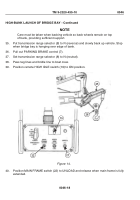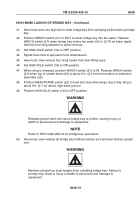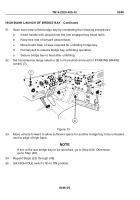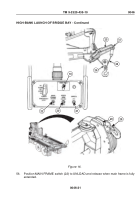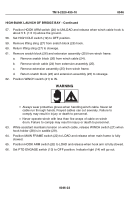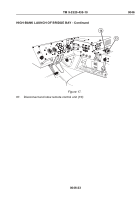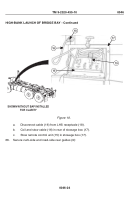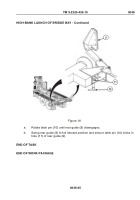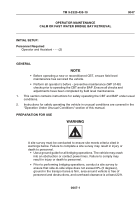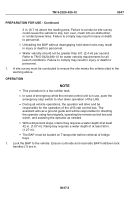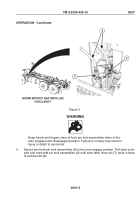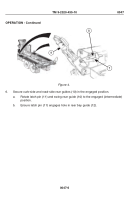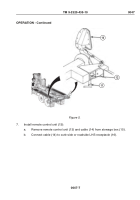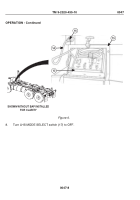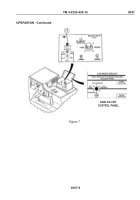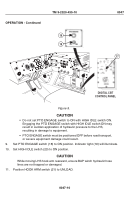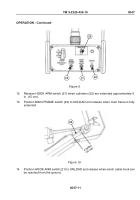TM-9-2320-435-10 - Page 380 of 1168
PREPARATION FOR USE - Continued
2 in. (6.7 m) above the loading area. Failure to conduct a site survey
could cause the vehicle to slip, turn over, crash into an obstruction,
or contact power lines. Failure to comply may result in injury or death
to personnel.
•
Unloading the BAP without disengaging hold-down locks may result
in injury or death to personnel.
•
Water velocity should not be greater than 8 ft. (2.4 m) per second.
Refer to TM 5-5420-290-12 for water velocity requirements for all
launch conditions. Failure to comply may result in injury or death to
personnel.
1.
A site survey must be conducted to ensure the site meets the criteria cited in the
warning above.
OPERATION
NOTE
•
This procedure is a two soldier task.
•
In case of emergency while the remote control unit is in use, push the
emergency stop switch to shut down operation of the LHS.
•
During all vehicle operations, the operator will drive and be
responsible for the operation of the LHS cab control box. The
assistant acts as a ground guide and will be responsible for directing
the operator using hand signals, operating the remote control box and
winch, and assisting the operator as needed.
•
With a 20 percent slope, interior bay requires a water depth of at least
42 in. (1.07 m). Ramp bay requires a water depth of at least 50 in.
(1.27 m).
•
The BAP must be loaded on Transporter before retrieval of bridge
bays.
1.
Lock the BAP to the vehicle. Ensure curb-side and road-side BAP holddown lock
handles (1) are in.
TM 9-2320-435-10
0047
0047-2
Back to Top

